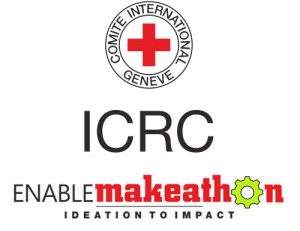Solar Thermal Hydrogen Production – An Adventure
Fifty million tons of hydrogen are used every year mainly for making fertilizers and for refining petroleum. Today, it is also explored as an energy storage medium because electricity storage at large scale is costly and inefficient. Hydrogen can be used as a chemical, in particular to make hydrocarbons, so it can replace petroleum, and it is a source of clean power –for transportation for example- because its use results in water only and nothing else.
Wouldn’t it be great to make hydrogen in a clean and sustainable way?
The history of H2P began in 2001 on the premises of Creative Services s.a.r.l. with contemplations about what to do with acetylene. From a coffee table discussion the subject evolved into patent applications and the search for funds to realize the idea.
H2P is a hydrogen production technology based on thermal water splitting at temperatures above 2200°C. The concept employs a particular thermal configuration that allows extracting oxygen directly from the hot, dissociated steam and extracting hydrogen outside a gas permeable insulation. Thermal efficiency is thus maximized because no ballast gases are transported between the cold and hot zones. Although any heat source providing sufficient power could be employed, only heating with concentrated sunlight is feasible.
Solar hydrogen generators, just like CSP plants, would be installed in places with plenty sunshine. Besides a bit of power for controls, the hydrogen is produced without electricity, without fossil feed, without emissions or any other pollution. The social and economic impact would be dramatic.
The three inventors got in contact with business developers and eventually created Clean Hydrogen Producers ltd. in 2006. One and a half million euros were raised. However, out of this sum cash was diverted by the business developers. Furthermore the setup was used by them for fraudulent financial activities funnelling approximately thirty million dollars from private investors through a fund in Liechtenstein to unknown receivers. Obviously, this ended up with lawyers and prosecutors in the USA, UK and Switzerland.
This is a good example of how well-intended tools for start-ups and small private companies could be turned into an instrument to extract and divert funds from innocent investors wanting to support a promising enterprise. I presented the case in consecutive years to students at a Geneva based business university.
In spite of the fraud that as going on or better before it became apparent, we attempted to build a first hydrogen generator. We were assisted by universities and research institutes, foremost by the Geneva Engineering School (Hes-SO/HEPIA) and the Swedish Ceramics Institute (SWEREA/IVF). As could be expected we destroyed some ceramics components in our first heating trials reaching merely 1400°C with our furnace in Gothenburg. Unfortunately the Swedish project leader fell sick during this time and was out. Together with the fraud that was going on, our development work came to stand still at the end of 2007 and Clean Hydrogen Producers ltd. was abandoned.
However, based on the encouragement we had received from experts in science, industry and business, and not being intimidated by the challenges working above 2200°C we began anew. The intellectual property, three patents granted in over fifty countries worldwide, was moved to a new structure H2 Power Systems ltd. About half of those investors who contributed to the initial funding of Clean Hydrogen producers came along.
H2 Power Systems was originally based on the Isle of Man. We had talked to various fund raisers, venture capitalists and private investors. All saw the economic potential of an efficient and cheap solar hydrogen generator. And several recommended having the business in a tax favourable location. We were stupid enough to follow such advice. During 2008 and 2009 we first pursued financing with German private investors. This financing attempt failed because the main investor died of a heart attack in November 2008. He would have asked us to move our business to Germany.
While struggling with applications for public support we fell on an Irish investor. After five months of due diligence, in February 2010, H2 Power Systems was moved to Dublin and received two and a half million euros. Our hope was to build a laboratory prototype hydrogen generator within the next two years.
We attracted the interest of the Fraunhofer IKTS. They agreed to develop furnaces for testing high temperatures ceramics and making hydrogen. The Solar Laboratory at PSI expressed their interest building our solar hydrogen generator once we provided the core components and, of course, funds. HEPIA, was still supporting us, and the Energy Research Center of The Netherlands provided us with their high performance hydrogen filters.
During 2010 we conceived and built a device for testing ceramic filters above 2200°C. Until 2000°C everything was fine. Above, we made quite a number of new experiences with chemical reactions and ceramic structural changes before we were able to heat steam to close to 2300°C. We measured the oxygen permeability of various ceramic filters. In the year that followed we constructed an improved furnace with an extension for extracting not only the oxygen but also the hydrogen from the steam. On 26 July 2011 we produced hydrogen for the first time.
It was now time to improve our filters, which had reached five to ten per cent of what we called economically viable performance. Unfortunately this was and still is a costly and time consuming activity. Within the given possibilities we could develop a new material, produce some filters and test them in approximately three month and at a cost around thirty thousand euros. As you easily see, that activity absorbed a lot of our time and resources.
We had just begun the R&D on the high temperature ceramic oxygen filters when the next event hit the project. In October 2012 our sponsor went into liquidation and somewhat later H2 Power Systems ran out of funds.
The events that lead to this liquidation are quite revealing in showing the interconnections between a small private enterprise like ours and international business and politics. Our sponsor had made his fortune in real estate. During the crisis of 2008 a lot of his property lost its value. When it came to reshuffling debt, these were not covered any more by the actual value of the property. The Irish government in form of NAMA (National Asset Management Agency) came in and secured these loans. So far so good, as the real estate provided regular income and business went on as usual. But then the Irish government got pressure from the European Union to get rid of its bad debt and reduce its deficit. That meant selling the related property or business, and the forced liquidation of our sponsor.
We went on with our R&D with decreasing activity roughly into 2014 when all reserves were consumed. The liquidation of the sponsor entailed that the Irish government ordered an accounting firm to sell the sponsor’s real estate, a value of the order of two billion euros, and at the same time his share in H2 Power Systems.
As H2 Power Systems was only a minor crumb of the cake, and the liquidator was constraint to not doing anything other than selling the share in H2 Power Systems, new fund raising was not possible anymore. A new investor would have had to buy out the liquidator for considerable money before investing. We could not find anybody interested in doing so.
By the end of 2015 the last penny of H2 Power Systems had been spent. Patent fees were not paid anymore. In July 2016 the last patents lapsed.
Gladly, our story shows that an ambitious project, ambitious in terms of cost and time, can find financing. There are people not only thinking about our future but also putting there money where there mouth is. Sadly, there are also people abusing good ideas. And sometimes events at the larger scale can hit the small man.
I deeply regret that our solar hydrogen generator development found such a sad end. All the research results are still available, and the material and equipment is in storage in Geneva. If there was someone out there with interest and resources, I’d be happy to give it another try, and I’m sure my co-inventors would do so too.









